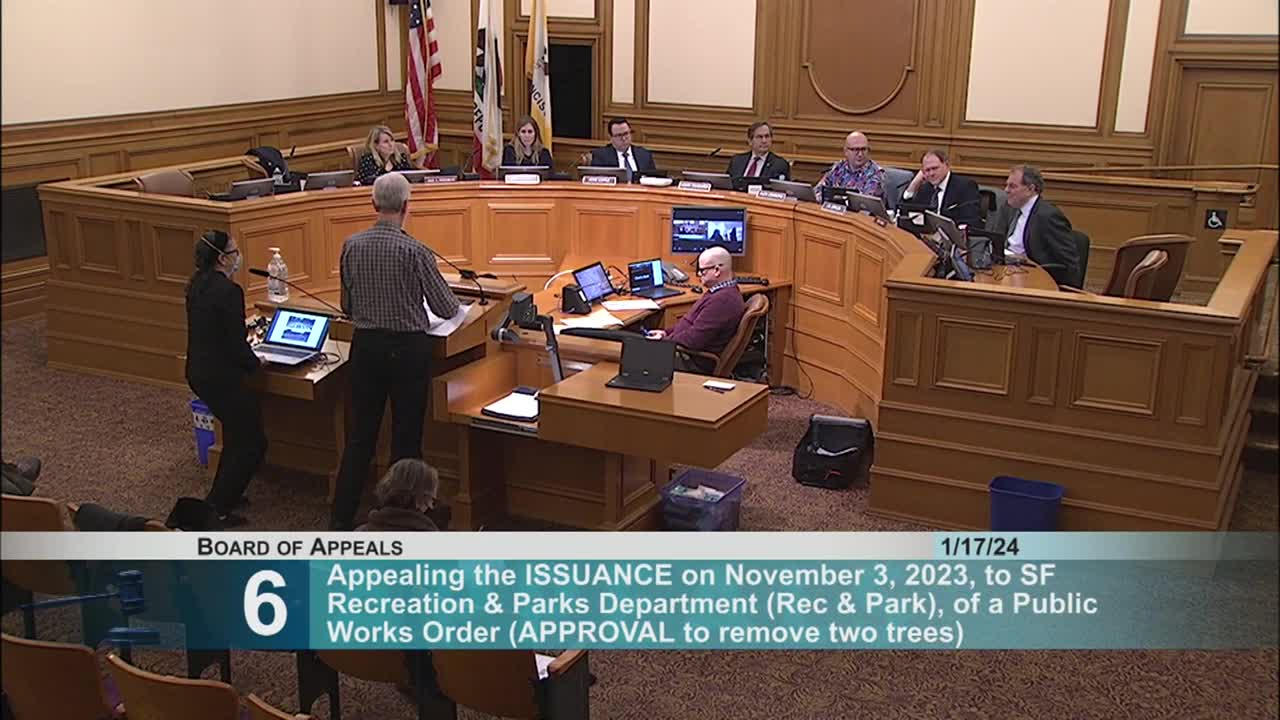Local Designer Challenges Tree Removal Justification for Plaza Construction
January 17, 2024 | San Francisco City, San Francisco County, California

This article was created by AI summarizing key points discussed. AI makes mistakes, so for full details and context, please refer to the video of the full meeting. Please report any errors so we can fix them. Report an error »

During a recent San Francisco city meeting, a heated debate emerged over the proposed removal of two trees to facilitate a new plaza design. The discussion highlighted tensions between urban development and environmental preservation, as city officials grappled with the implications of their design choices.
One city official expressed frustration, questioning the motivations behind the tree removal. He argued that the trees were not obstructing visibility and criticized the presentation given by the design team, suggesting it was crafted to justify the removal rather than address the real issues affecting traffic and pedestrian safety. He emphasized that the trees, which were described as small, would not significantly impact visibility at the busy intersection.
In response, a member of the design team defended the decision, citing professional guidelines from transportation authorities that support the removal of trees that obstruct traffic signals. He insisted that the decision was based on thorough evaluations of the site and adherence to safety principles, rather than a desire to alter the aesthetic of the plaza.
The exchange underscored a broader conversation about urban planning in San Francisco, where the balance between enhancing public spaces and preserving natural elements remains a contentious issue. As the city moves forward with its development plans, the outcome of this debate could set a precedent for future projects, highlighting the need for transparent communication and community involvement in urban design decisions.
One city official expressed frustration, questioning the motivations behind the tree removal. He argued that the trees were not obstructing visibility and criticized the presentation given by the design team, suggesting it was crafted to justify the removal rather than address the real issues affecting traffic and pedestrian safety. He emphasized that the trees, which were described as small, would not significantly impact visibility at the busy intersection.
In response, a member of the design team defended the decision, citing professional guidelines from transportation authorities that support the removal of trees that obstruct traffic signals. He insisted that the decision was based on thorough evaluations of the site and adherence to safety principles, rather than a desire to alter the aesthetic of the plaza.
The exchange underscored a broader conversation about urban planning in San Francisco, where the balance between enhancing public spaces and preserving natural elements remains a contentious issue. As the city moves forward with its development plans, the outcome of this debate could set a precedent for future projects, highlighting the need for transparent communication and community involvement in urban design decisions.
View full meeting
This article is based on a recent meeting—watch the full video and explore the complete transcript for deeper insights into the discussion.
View full meeting
